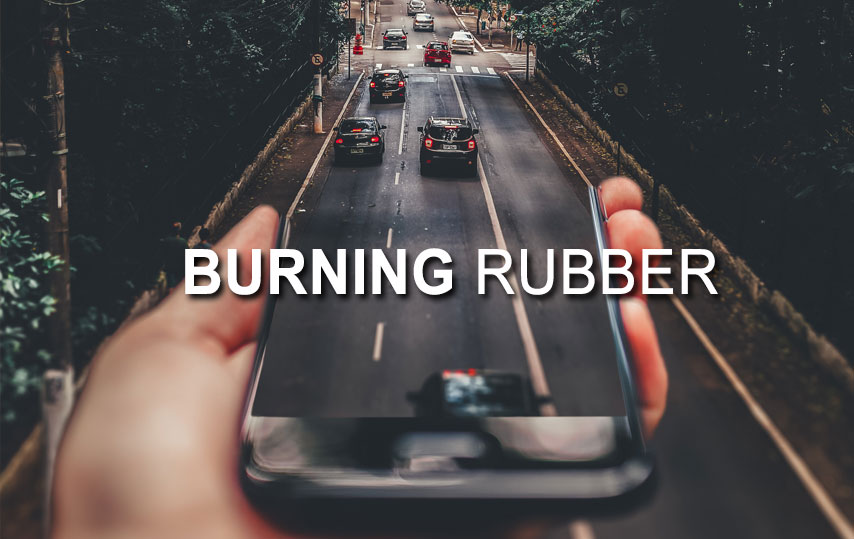There are about 6 million car accidents in the United States every year, which amounts to close to 16,000-or-so every day of every week of every month. Car accidents cost more than $230 billion per annum or more than $800 for every person in the country. In the last five years, the number of accidents has risen by almost a million a year.
1 in 45 American drivers experiences some kind of injury-producing accident annually. Almost everyone in the country knows someone who has suffered in a car crash. Not everyone, however, knows anyone who practices yoga who’s been in a car crash.
It’s not because they don’t drive cars. Yoga might be from back in the walking and horseback days, but everyone drives cars nowadays. It’s a birthright rite of passage right of way in the modern world. It’s more likely that since they practice yoga, and the lessons learned, they are able to stay out of harm’s way more often than not.
Some of the causes of car crashes are unavoidable, whether you practice yoga or not, like design defects of the car itself, potholes and tire blowouts, animals like deer crossing in front of you, and even slippery treacherous heavy rain. Most accidents, however, have nothing to do with a moose jumping in front of your car in a rainstorm as you hit a pothole and all your tires blow out. They are usually the fault of human misbehavior.
The lion’s share of mishap is the result of driving drunk, driving drug-addled, reckless driving, running red lights, and distracted driving. Driver error is by far the largest single cause of smash-ups in the United States, according to the National Highway Traffic Safety Administration. It’s gotten to the point that almost 70% of all traffic fatalities are caused by aggressive driving.
The wages of out on a limb driving, like carelessness aggressiveness tailgating, turning and passing improperly violating rights of way sensation-seeking speeding road rage, are bump and grind life and death. On top of that, many drivers overestimate their own skill level behind the wheel. 90% of us believe we have an above-average ability. But public roads are not proving grounds for bumper cars.

Going foggy mountain, making matters worse, young and old, men and women, no collar to white collar, are stopped all the time for driving under the influence. There are literally millions of DUI collars in the United States every year. No matter the source, such as spirits or various other drugs besides alcohol, drivers demonstrating impairment are arrested and charged.
Distracted driving prioritizes ordering a sausage mushroom green pepper pizza from your car while trying to find the cup holder for your Starbucks over being able to stop in a split second’s notice on a four-lane while whizzing along at 65 75 85 MPH. Even though safe driving depends on your ability to notice many things at once, it might be better to keep the deluxe pizza you’re dreaming about out of the mix.
Since driving is the most dangerous thing most people do on a daily basis, why do so many people turn into tools the minute they get behind the wheel? It’s one thing to cut in line at the supermarket. It’s another thing to cut in line on the superhighway. Two shopping carts in a catfight will end up in bruised feelings. Two SUV’s going mano a mano puts the lives of all involved at risk.
Why take the risk?
“When we’re in a car we often feel anonymous,” explained Erica Slotter, a social psychologist at Villanova University. “When we feel anonymous, we lose focus of our moral compass and are more likely to behave badly.”
Middle fingers fly fast and furious
At even its most basic level, notwithstanding any points on the compass, yoga is good for your driving. Being stuck in a traffic jam can be a pain in the ass, but it is definitely a pain in the back. Not only are you sitting around seething, but once you get going there are acceleration forces, vehicle sway, and vibration. “Coupled with the design of the car seat itself, they can increase the chance of back problems,” said Alan Hedge, a professor of ergonomics at Cornell University.
Stop and stretch as often as you can, say most chiropractors.
Take a yoga class. All of the basic yoga exercises, from cat cow to downward facing dog to bridge pose to dolphin plank are good for your back. They stretch and lengthen your back. They strengthen your back. They help return your back to its proper alignment.

Take a yoga class once or twice a week. Consistent practice leads to better alignment overall, better posture, and better body awareness. Instead of slumping in c-curve style in the front seat, awareness of your body gained through yoga helps you maintain the natural curvature of your spine.
Twisting poses are a big part of the practice. Sitting at home, at work, and in a car stiffens up tissues, muscles, and joints. When you rotate your spine your back muscles mobilize and vertebrates decompress.
It makes reaching into the back seat easier.
Not only that, getting on the mat is good for visual acuities, such as being able to spot sudden obstacles and shifts in traffic patterns. A report in the ‘Journal of Modern Optics’ revealed that people who practiced yoga were able to detect that a flashing light was pulsing, rather than held steady, at significantly higher frequencies than control subjects. They were able to see danger ahead sooner than later.
If drugs and drink are the banes of road traffic safety, soaking up some of yoga’s lessons about on yoga off drugs might get some people to put the brakes on. Since drugs and drink are time-honored pastimes, the problem isn’t having a cocktail or a spliff now and then, but tanking up on opioids or booze or both. Fortunately, many drunk drivers get into onecar crashes and just kill themselves. Unfortunately, more than half of all fatal car accidents involve one drunk driver and one sober driver.
Drugs and drink slow you down, slow your reaction time, slow your brain down, slow the processing of sensory information, and generally impair your ability to use common sense. Mind-altering substances can be entertaining, but there’s a falling off point where they simply distort reality to no good end and lead to wild goose chases. In the end, it amounts to little and ends in nothing.
Although it is true yoga requires effort to do, while popping a pill or bending an elbow is as easy as it gets, the rewards of yoga practice are there for the taking. It brings the body and brain into balance. Although there are no rules on high that say everyone who does yoga has to be a teetotaler, it is a practice of awareness, not something for dumbing down your consciousness.
There are no hangovers after a yoga exercise meditation mindfulness class. It’s clear sailing ahead.
“It takes only one drink to get me drunk,” said George Burns. “The trouble is, I can’t remember if it’s the thirteenth or fourteenth.” When you practice enough yoga, however, you usually remember to stick to the first or second one, and you’re always aware that driving juiced or junkedup is dangerous, not just to you, but to everyone else on the road.
When did eating fiddling with the radio grooming phone calling and texting behind the wheel while merging lanes become the norms of unsafe driving? At any given time about 10% of all drivers are distracted, according to Paul Atchley of the Transportation Research Institute at the University of Kansas. It might be prudent every time you start up your car to assume there is someone out there who will be trying to kill you.
For every 11 miles driven the average driver is on their phone for a half-mile. Looking down at it for 5 seconds at 55 MPH is the same as driving the length of a football field with your eyes closed. It’s relying on luck, walking the high wire between the vital spark and disaster. Maybe you’ll score a touchdown. Maybe you’ll get sacked for a big loss.
Mental focus is a large part of yoga. It’s one of the eight limbs of the practice and is woven in and through all the other parts. There might not be any rules about drinking, but there is a rule that says pay attention and no texting while in headstand.
In yoga practice, the idea of a focused gaze is called drishti. It essentially means a place to look. It is a core concept and was championed in the work of K. Pattabhi Jois and B. K. S. Iyengar, the two pioneering teachers of the twentieth century. On the yoga mat, it means looking at one spot while in a balancing pose to help keep you from falling over. On another level, it means paying attention to what you’re doing and being mindful of the moment.
“It appears that following yoga practice participants were better able to focus their mental resources,” said Neha Gother, a professor of kinesiology at the University of Illinois about research published in the ‘Journal of Physical Activity and Health’.
“The breathing and meditative exercises aim at calming the mind and body and keeping distracting thoughts away.”
On all levels, it means being able to damp down the chatter.
In page-one yoga and day-to-day life it means concentrate your thoughts on the task at hand. ‘Look, something shiny!’ doesn’t get you anywhere. On the open road, it means eyes front and hands on the wheel. Put the smartphone away in the glove box. Better yet, throw it in the trunk. Manipulating it and talking both distract the brain. Driving is itself enough of a multitasking activity, at least until we are all being chauffeured by driverless cars.
The practice of yoga and driving are both about keeping the mind body in tune. Although yoga classes always end with savasana, otherwise known as dead man’s pose, there’s no reason to race to dead man’s curve after class.
“We both popped the clutch when the light turned green, you should have heard the whine from my screamin’ machine, Dead Man’s Curve I can hear ‘em say, won’t come back from Dead Man’s Curve,” is how the Jan and Dean song goes. Everybody knows what happened at the curve in the road.
At its most elemental level yoga is about conscious breathing. The breath is what links all aspects of the practice. It redirects your focus. It imparts a sense of compassion, for yourself and others. When compassion kicks in it’s easy to drive close to the speed limit so that you’re not endangering others. It’s easy to stay sober and alert so that you aren’t making yourself a menace to society. It’s easy to let another driver merge into your lane without blowing a gasket.
But, if the screws do start coming loose, just breathe.


















 Other
Other